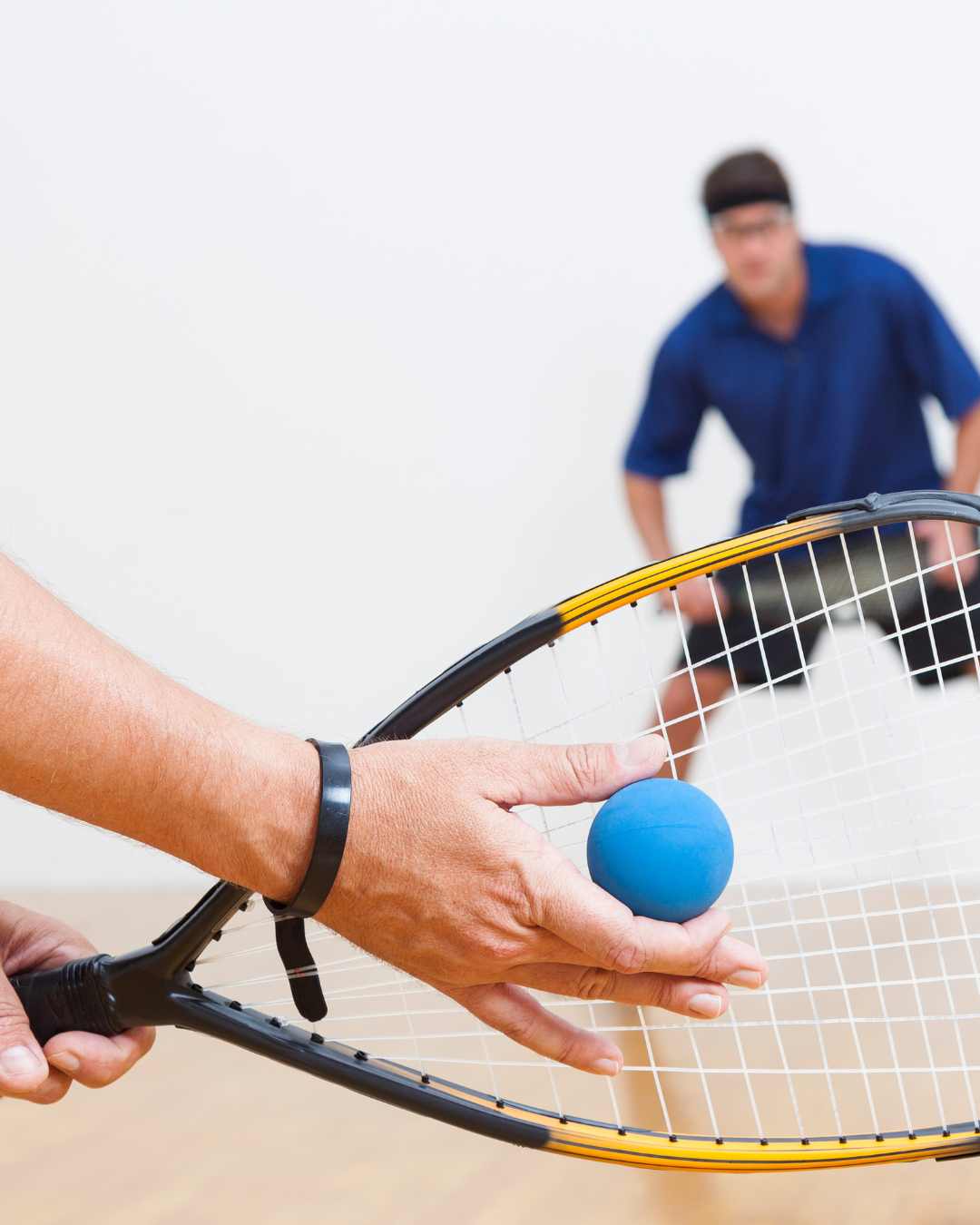If you’ve ever considered stepping off the tennis court for some indoor rackets action – or you’re new to racket sports and considering what’s the best one for you, here’s a guide to the difference between Squash and Racketball in the UK.
Many people are choosing to play Racketball over Squash as it’s beginner-friendly and less physically demanding, with a larger, bouncier ball and shorter racket, making it easier to hit and control, with less complex techniques. The bouncier ball in Racketball allows for longer rallies, which makes the game more forgiving and less focused on speed. The slower pace of Racketball makes it more enjoyable for casual and social players, where players of different skill levels can compete more evenly, while still getting a good cardio workout.
1. Ball Size and Bounce
Squash: The ball is smaller (about 40mm in diameter) and has less bounce. It requires more precise timing and control.
Racketball: The ball is larger (about 55mm) and bounces higher, making it easier to hit and allowing for longer rallies.
2. Rackets
Squash: Players use a longer racket, typically around 27 inches.
Racketball: The racket is shorter, about 22 inches, making it easier to maneuver, especially for beginners or those who prefer a less intense physical game.
3. Court Size
At Exeter Golf and Country Club, Squash and Racketball are played on the same courts, which measure 9.75m x 6.4m. For Racketball, the bouncier ball and shorter racket make the game feel different in terms of movement and rally dynamics.
4. Play Style and Intensity
Squash: Requires faster reflexes, greater fitness, and more agility due to the lower bounce and smaller court.
Racketball: Is slower-paced, less physically demanding, and often considered more accessible for players of all ages and fitness levels.
5. History of the game
Squash: Has a long history and is more widely played, particularly at competitive levels.
Racketball: Is growing quickly in popularity, especially among players looking for a less strenuous alternative to squash.
6. Impact on the joints
Because racketball is slower-paced and less intense, it tends to be gentler on the body, particularly the joints. It’s a good choice for players with injuries or those who want to avoid the wear and tear that can come from the sharp movements in squash.
7. Which is best for tennis players?
Many tennis players wanting an all-weather alternative, turn to racketball on rainy days because it has a similar feel in terms of movement and hand-eye coordination, but is easier to play indoors compared to squash.
In essence, Squash is more intense and fast-paced, while Racketball offers a more accessible, beginner-friendly experience with longer rallies.
Want to know more?


